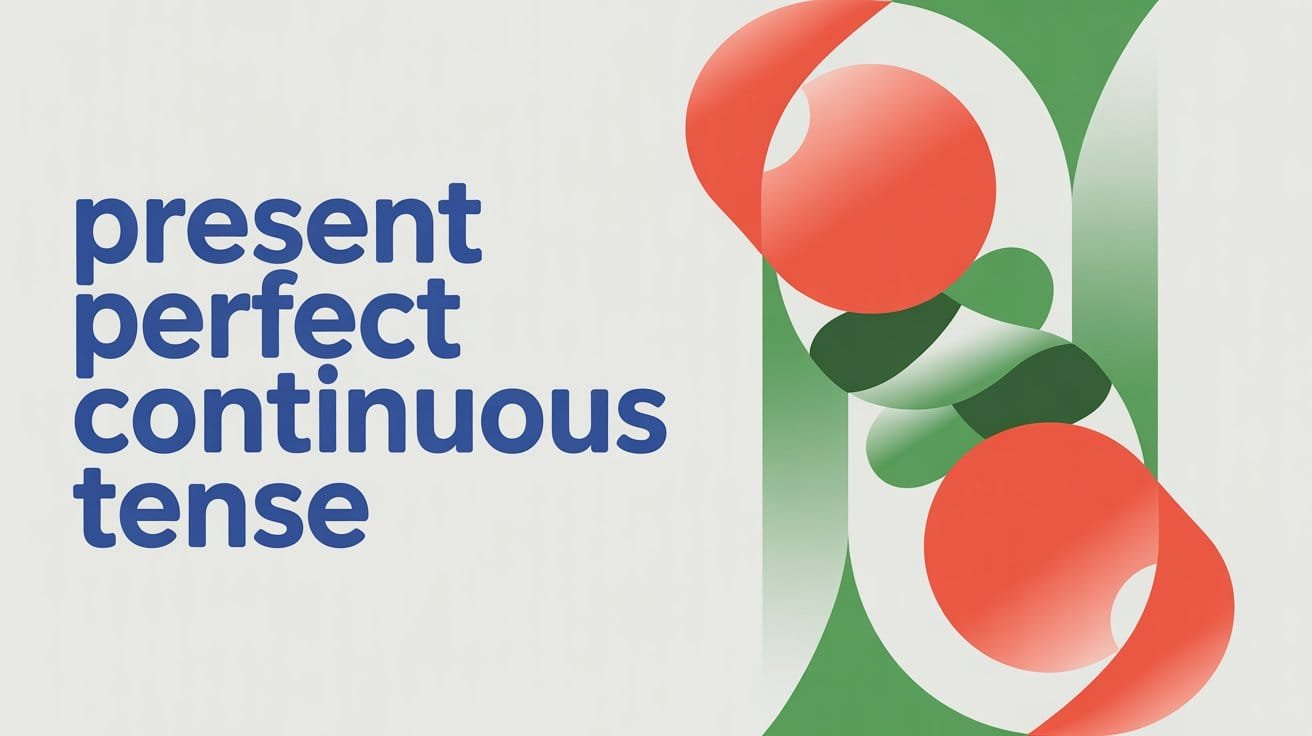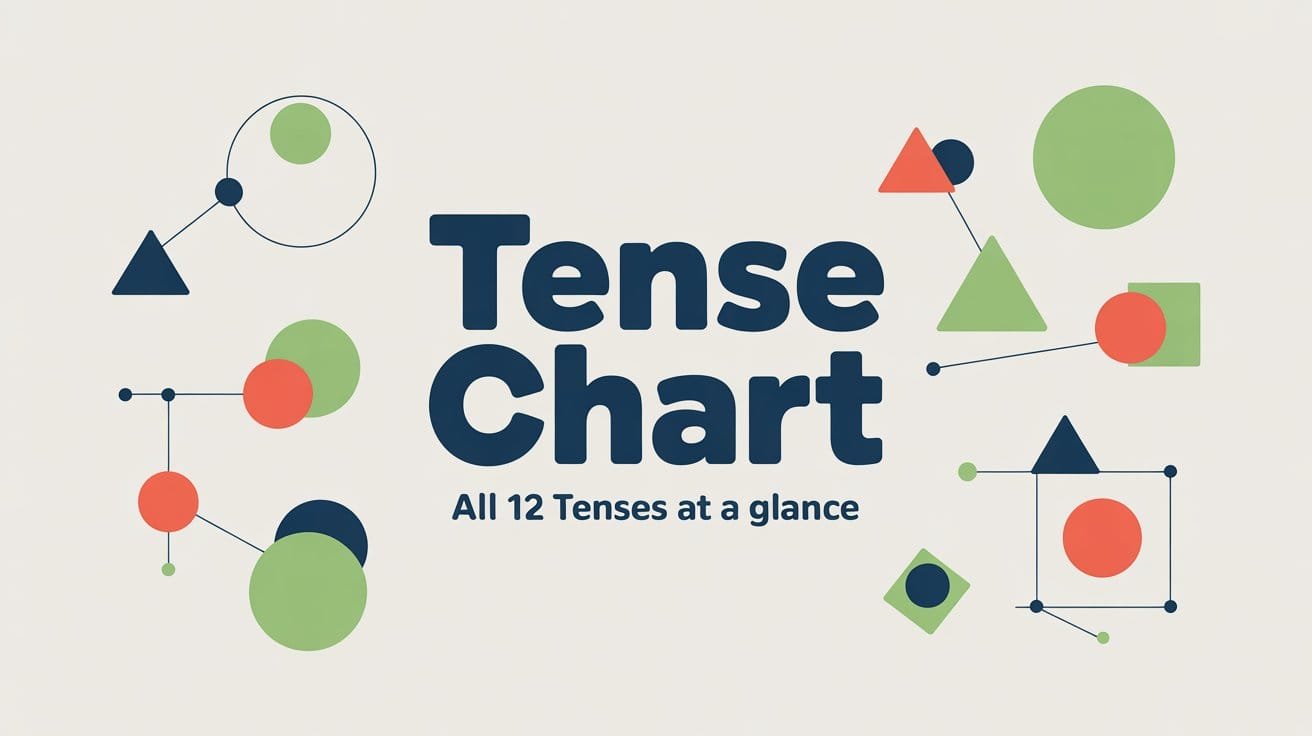The present perfect continuous tense is used to describe actions that began in the past and are still happening now, or have just recently stopped. It helps highlight how long something has been going on and is especially useful when the duration of the activity matters.
For example: “She has been studying for two hours.” This tells us the studying started earlier and is still happening, or has just finished. This tense helps you talk about habits, temporary actions, or ongoing situations in a clear and natural way.
Structure of the Present Perfect Continuous Tense
The present perfect continuous tense is used to show that an action started in the past and is still continuing or has recently stopped. It’s formed using have/has + been + verb-ing.
Affirmative Sentences
Structure:
Subject + have/has + been + verb-ing
- Use have with I, you, we, they
- Use has with he, she, it
Examples:
- I have been working on this task all morning.
- She has been reading the same book for days.
- They have been waiting for the bus since 8 AM.
- We have been learning Spanish for a year.
Negative Sentences
Structure:
Subject + have/has + not + been + verb-ing
Examples:
- He has not been feeling well lately.
- I haven’t been sleeping properly this week.
- We haven’t been using that app recently.
- She hasn’t been attending the meetings.
Interrogative Sentences
Structure:
Have/Has + subject + been + verb-ing?
Examples:
- Has he been staying with you?
- Have you been studying for the exam?
- Has she been cooking all afternoon?
- Have they been working together for long?
Usage of the Present Perfect Continuous Tense
The present perfect continuous tense is used to talk about actions that started in the past and are still happening or have just ended. It focuses on the duration or recent activity of the action.
To Describe Actions Still Happening Now
Use it when the action began in the past and is still continuing.
Examples:
- She has been writing her novel for three months.
- I have been working from home since January.
- They have been building the new office all year.
To Emphasize Duration
This tense helps highlight how long something has been going on.
Examples:
- He has been learning guitar for two years.
- We have been waiting for over an hour.
- You have been watching that show since morning!
To Describe Recent Activity with Visible Results
Use it when the activity has just stopped, but its effect is still present.
Examples:
- She’s tired because she has been running.
- I’ve been cleaning, so the kitchen is spotless.
- They’ve been painting—look at the walls.
To Express Temporary Situations
The tense can also be used to describe short-term actions or living arrangements.
Examples:
- He has been staying at his cousin’s place for a few days.
- I’ve been using her laptop while mine is being repaired.
Common Time Expressions with the Present Perfect Continuous
Time expressions are key to using the present perfect continuous correctly. They help show how long the action has been happening or emphasize recent activity.
Common Expressions
- for
- since
- all day / all week / all morning
- lately
- recently
- how long
- still
- this week / this month
Examples
- I have been studying for three hours.
- She has been working here since 2021.
- They have been traveling all day.
- He hasn’t been sleeping well lately.
- Recently, we’ve been focusing on new projects.
- How long have you been using this app?
Practice Tips for Using the Present Perfect Continuous Tense
This tense can feel long, but with regular practice, it becomes much easier to use naturally, especially when describing what you’ve been doing or how long something has been happening.
Talk About Ongoing Tasks
Think of something you’re still doing and describe it using this tense.
Example:
- I have been learning to cook new recipes this month.
- She has been practicing yoga every morning.
Focus on Duration with “for” and “since”
Use specific time expressions to describe how long the activity has lasted.
Example:
- They have been studying for three hours.
- He has been working since Monday.
Describe Visible Results
Practice linking the recent activity with its current result.
Example:
- She looks tired—she has been working nonstop.
- The floor is wet because I have been mopping.
Use Questions to Start Conversations
Try asking about ongoing or recent activities.
Example:
- What have you been watching lately?
- Have you been feeling okay this week?
Frequently Asked Questions About the Present Perfect Continuous Tense
What does the present perfect continuous tense show?
It describes actions that started in the past and are still happening or have just finished. It often highlights the duration or recent activity of an action.
Example: She has been studying for three hours.
How is the present perfect continuous tense formed?
Use have/has + been + verb-ing.
Use have with I, you, we, they; has with he, she, it.
Example: They have been working since morning.
What’s the difference between present perfect and present perfect continuous?
Present perfect focuses on the result of an action.
Present perfect continuous focuses on the duration, or ongoing activity.
Examples:
I have written five emails. (present perfect)
I have been writing emails all morning. (present perfect continuous)
Can I use this tense with “for” and “since”?
Yes. Use for to show the length of time and since to show the starting point.
Examples:
She has been studying for two hours.
He has been working here since April.
Is this tense used with stative verbs?
Usually not. Verbs like know, believe, or own describe states and are not normally used in continuous forms.
Incorrect: I have been knowing him for years.
Correct: I have known him for years.



